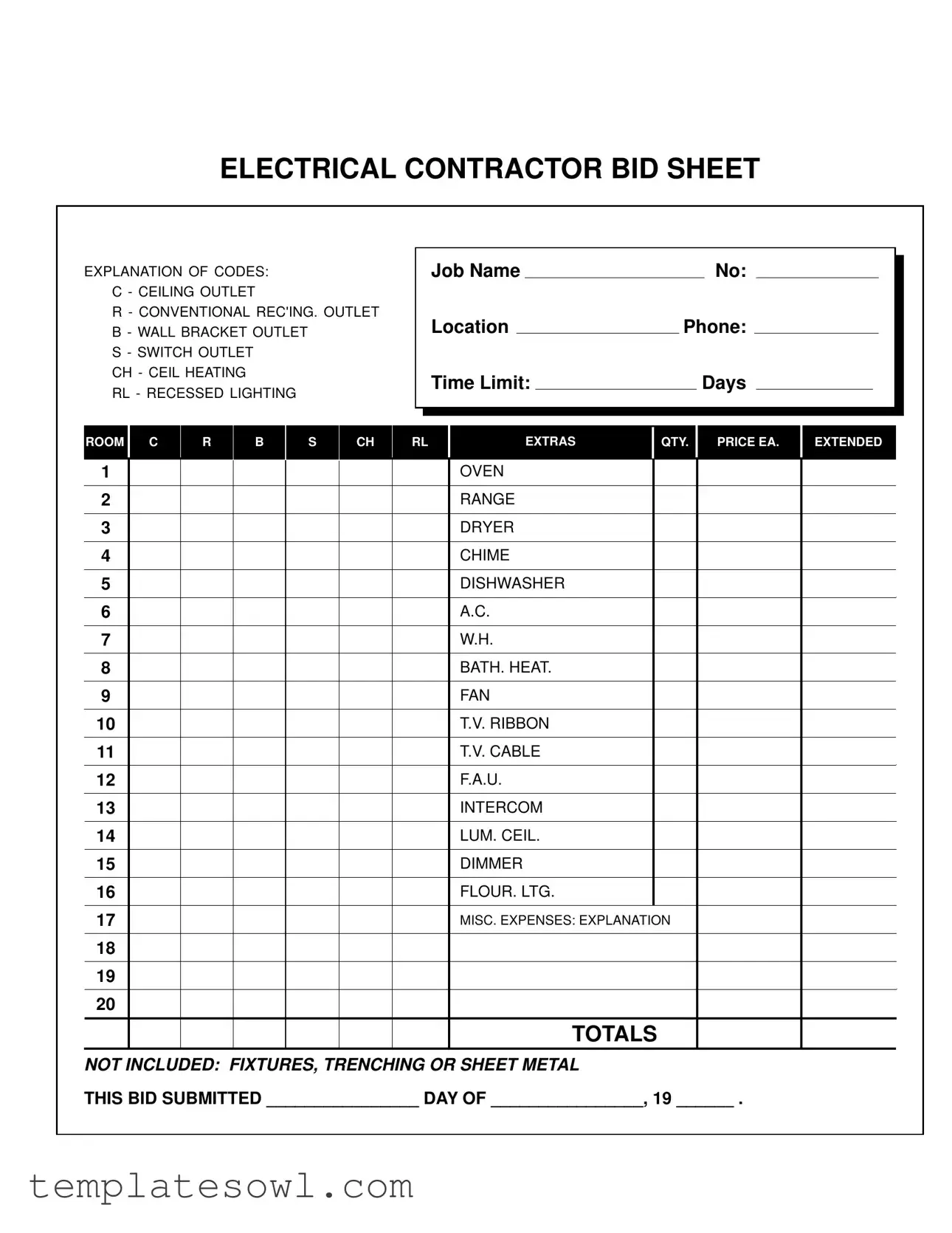What is the purpose of the Electrical Proposal form?
The Electrical Proposal form serves as a detailed bid sheet for electrical contractors. It outlines specific electrical components required for a project, including different types of outlets and fixtures. By using this form, contractors can provide clients with a clear and structured estimate of costs associated with electrical work.
What types of electrical components are included in the form?
The form includes a variety of electrical components, each represented by a designated code. These codes cover ceiling outlets (C), conventional receiving outlets (R), wall bracket outlets (B), switch outlets (S), ceiling heating (CH), recessed lighting (RL), and others. Additionally, it provides a list of appliances and fixtures such as ovens, ranges, and dishwashers, allowing for a comprehensive overview of the project’s needs.
How should a contractor fill out the Quantity and Price sections?
A contractor should list the quantity of each electrical component required in the designated quantity column. Next, the price per item should be entered in the Price EA (each) column. To calculate the total cost for each type of item, the contractor multiplies the quantity by the price per item. The extended cost then goes into the Extended column for each line item.
Are there any items or costs not included in the bid?
Yes, the form specifies that certain items are not included in the proposal. This includes fixtures, trenching, or sheet metal expenses. It is essential for both the contractor and client to discuss and clarify these exclusions to ensure there are no misunderstandings regarding the full scope of the project and associated costs.
What should be done after completing the bid?
Once the bid is completed, it should be submitted to the client on the specified date indicated on the form. The contractor should ensure that all necessary information is accurately filled out, including the job name, location, and phone contact. Discussing the bid details and addressing any questions from the client is advisable to move forward effectively.
Why is it important to specify a time limit on the bid?
Indicating a time limit on the bid is crucial as it sets an expectation for both parties regarding the validity of the proposal. It helps the contractor ensure that prices remain accurate and prevents potential fluctuations in costs due to market changes. Clients benefit from knowing the time frame within which they need to make a decision.

